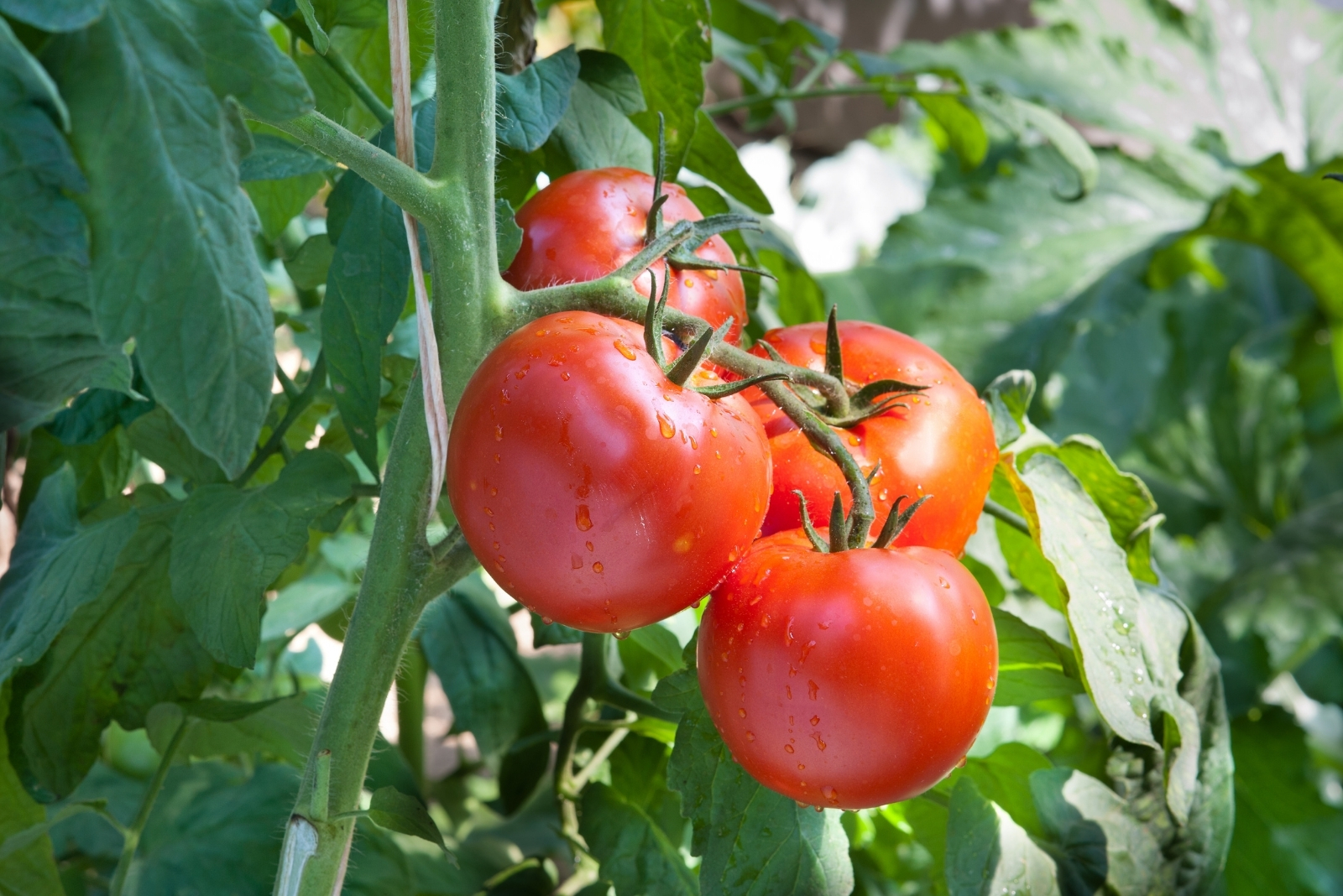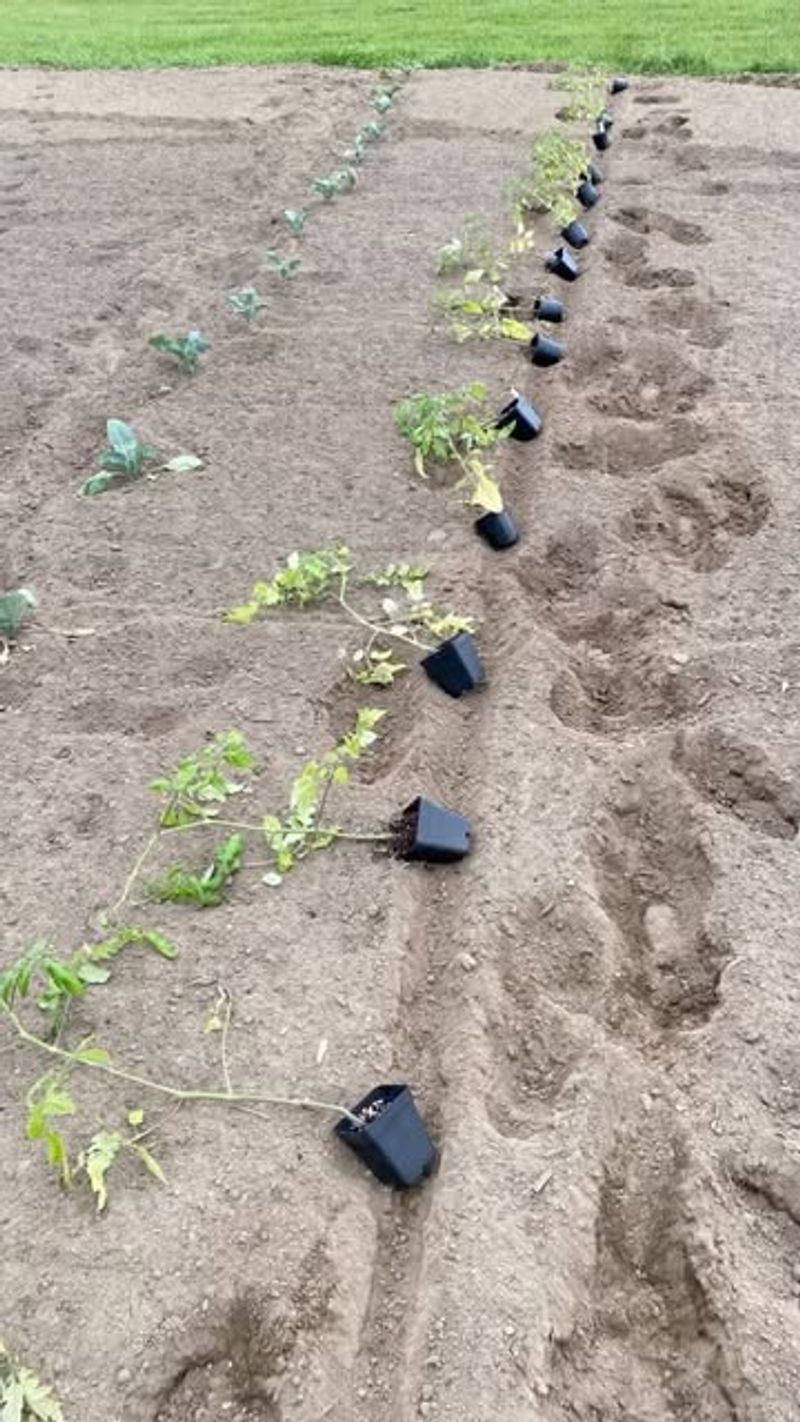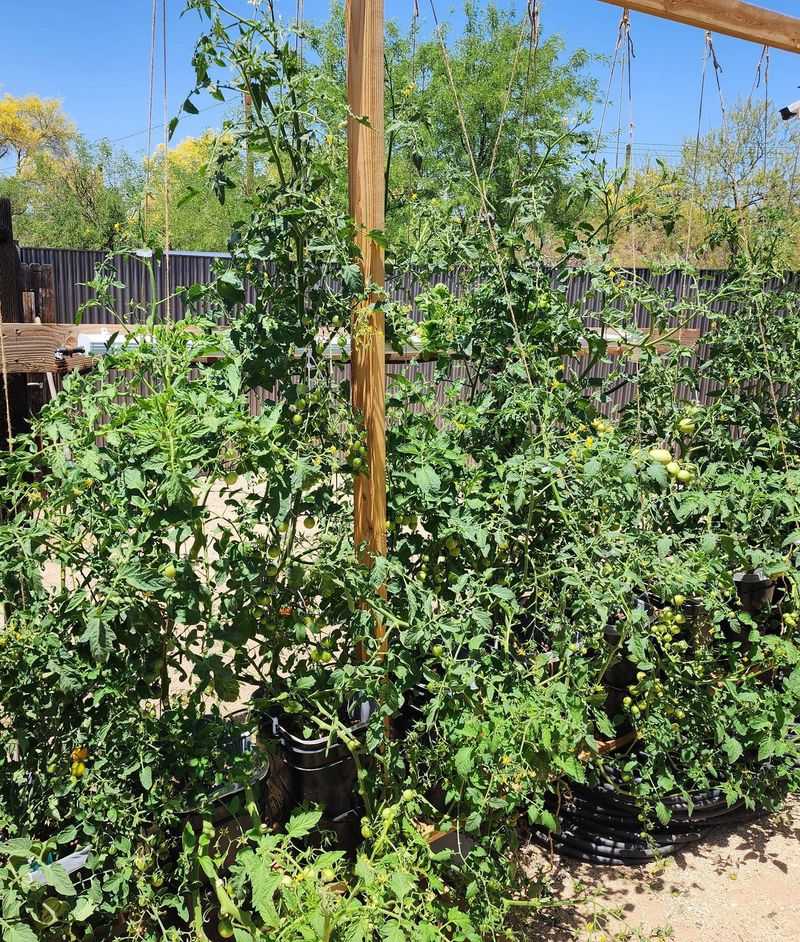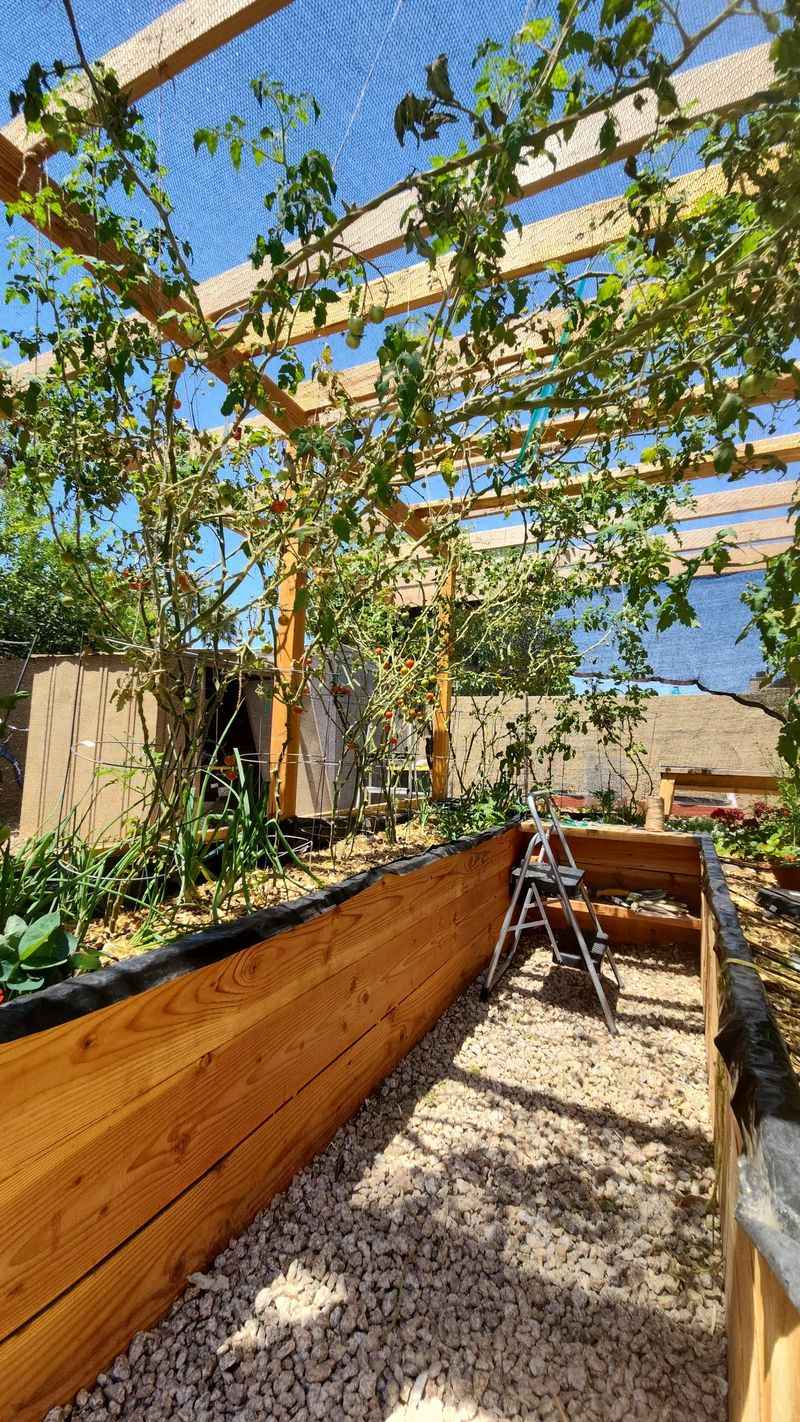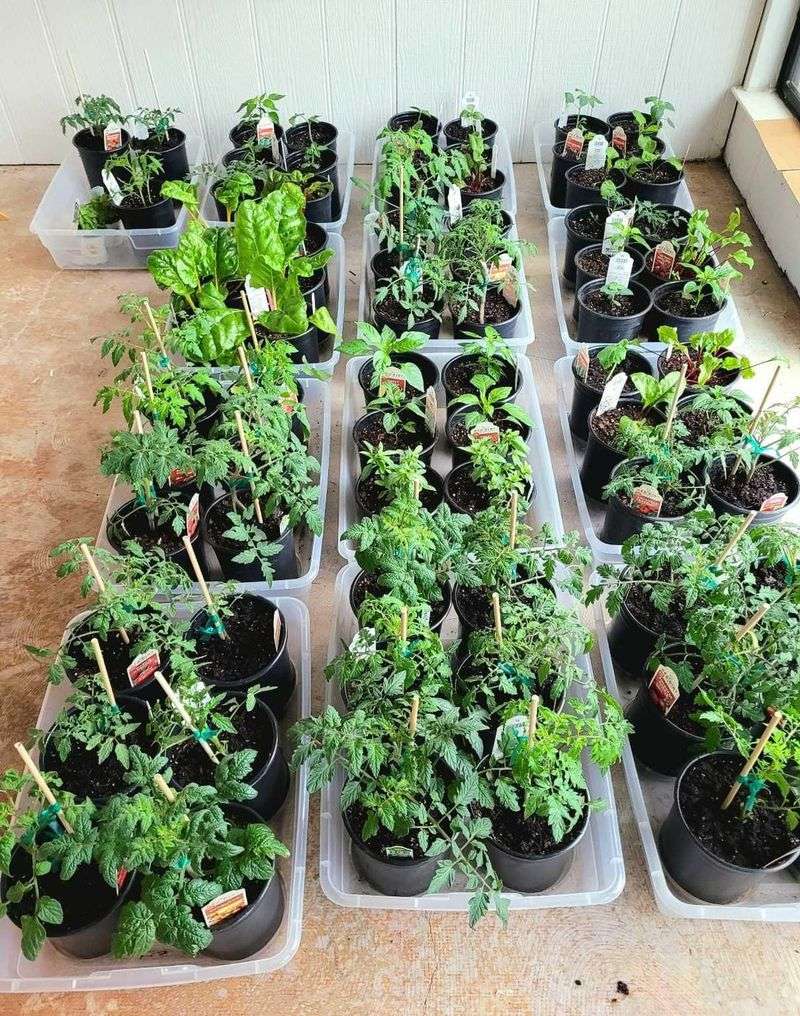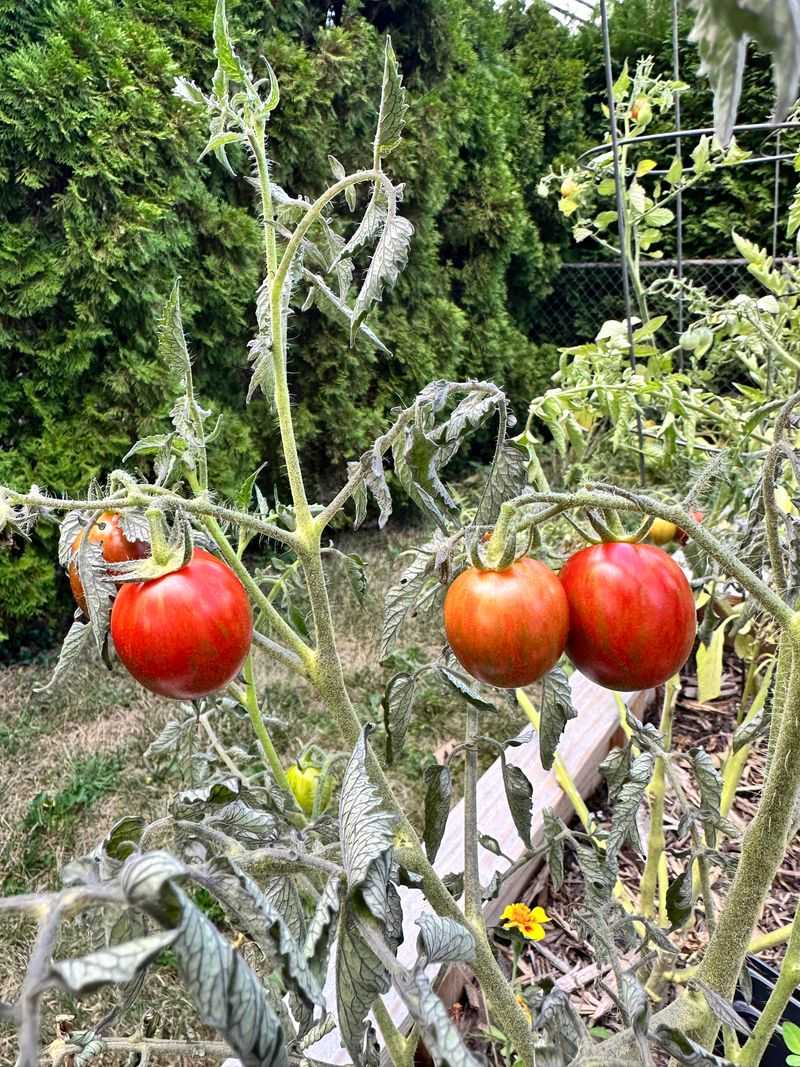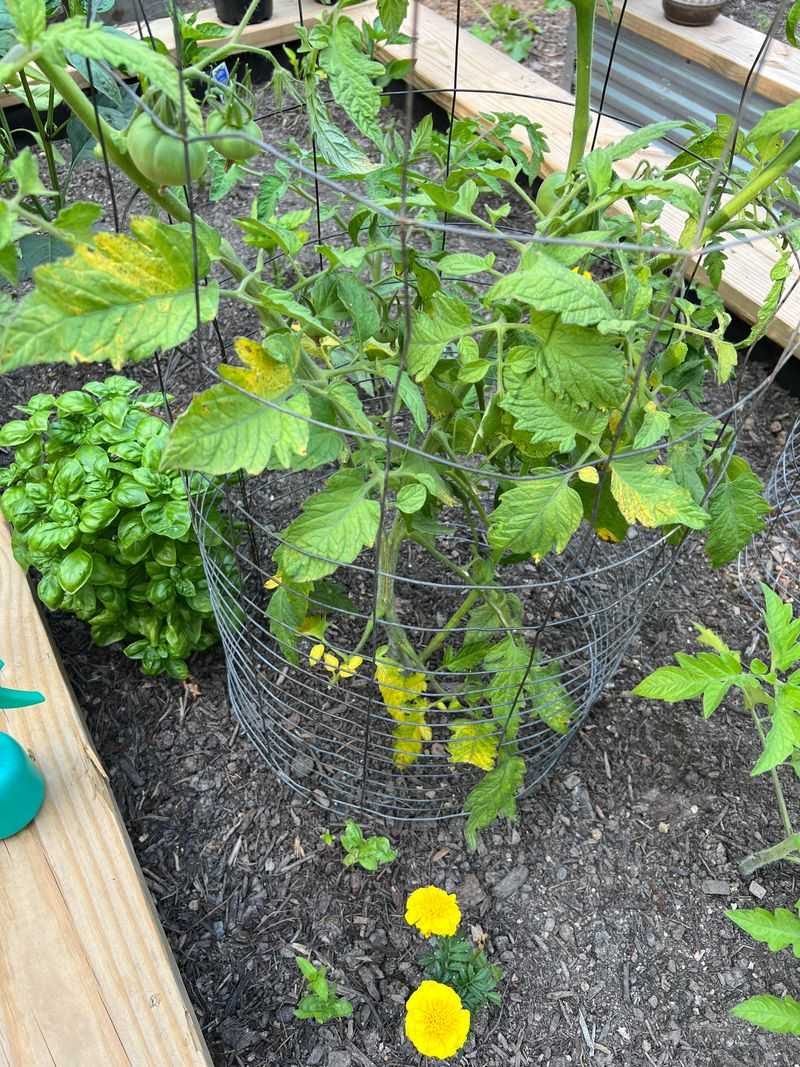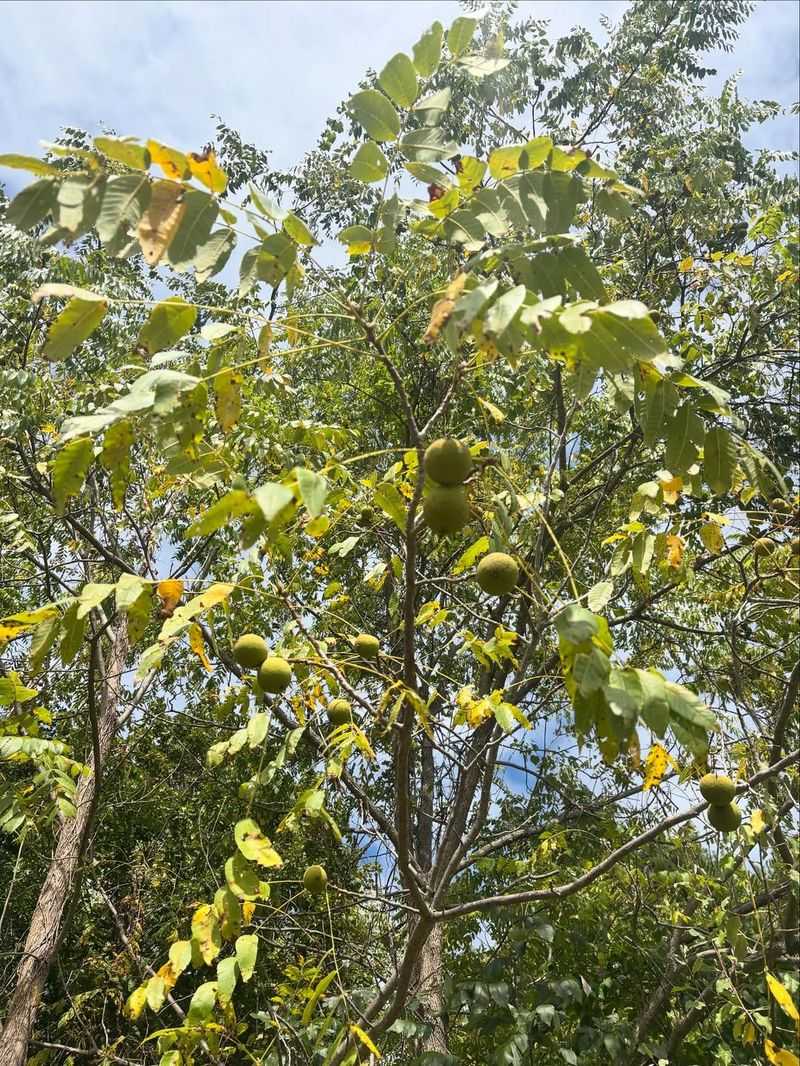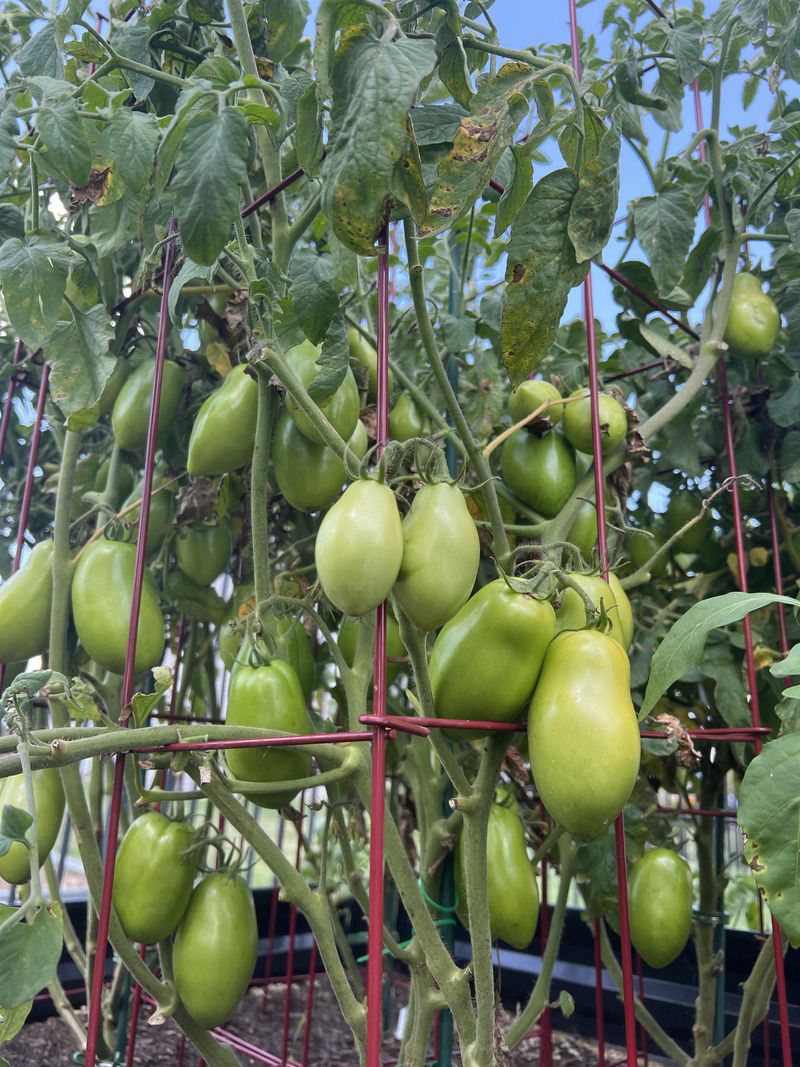Tomatoes are a favorite in Wisconsin gardens, but they can be picky about where they grow. The wrong spot can mean poor yields or pesky diseases later on.
Choosing wisely now makes all the difference once the growing season starts. Here are eight spots you’ll want to skip when planting tomatoes in Wisconsin.
1. Low-Lying Areas That Collect Water
Pooling water can spell disaster for your tomato plants in Wisconsin. When rain collects in low spots, the soil becomes waterlogged and oxygen can’t reach the roots properly.
Tomatoes need well-drained soil to thrive, and standing water creates the perfect environment for root rot and fungal diseases. Your plants might look wilted even though there’s plenty of moisture around.
Always choose higher ground or create raised beds to ensure proper drainage throughout Wisconsin’s rainy spring and summer seasons.
2. Heavily Shaded Spots Under Large Trees
Tomatoes are sun-loving plants that need at least six to eight hours of direct sunlight daily. Planting beneath mature oak or maple trees common in Wisconsin yards means your tomatoes will compete for both light and nutrients.
The thick canopy blocks essential rays, causing spindly growth and fewer fruits. Tree roots also steal water and nutrients from the soil, leaving your tomatoes struggling to survive.
Pick an open, sunny location away from large trees for the best results.
3. North-Facing Garden Walls or Fences
Ever notice how the north side of buildings stays cooler and darker? That’s because sunlight comes from the south in Wisconsin, leaving northern exposures in shadow most of the day.
Tomatoes planted against north-facing structures receive inadequate warmth and light, which slows growth and reduces fruit production significantly. The cooler microclimate also extends the time needed for tomatoes to ripen.
Instead, position your tomato plants along south or west-facing walls where they’ll soak up maximum sunshine and warmth.
4. Windy, Exposed Hilltops or Open Fields
While good air circulation prevents disease, constant strong winds can damage tender tomato plants. Wisconsin’s open landscapes often experience gusty conditions that snap stems, tear leaves, and knock off developing flowers.
Wind also dries out soil faster, meaning you’ll need to water more frequently. Young transplants especially struggle to establish themselves in these harsh conditions.
Choose a spot with some natural windbreaks like buildings, hedges, or gentle slopes that offer protection without blocking sunlight completely.
5. Areas Where Nightshade Family Grew Previously
Crop rotation isn’t just fancy gardening talk—it’s essential for healthy tomatoes in Wisconsin. Planting tomatoes where potatoes, peppers, or eggplants grew last year invites trouble because these relatives share the same diseases and pests.
Soil-borne pathogens like verticillium wilt and early blight can survive winter and attack your new tomato plants. These microscopic enemies build up over time, weakening your harvest year after year.
Rotate your tomato location every season to break the disease cycle and maintain soil health.
6. Spots With Compacted or Clay-Heavy Soil
Did you know Wisconsin has plenty of heavy clay soil that can suffocate tomato roots? Compacted earth prevents water from draining properly and makes it nearly impossible for roots to spread and access nutrients.
When soil is too dense, roots stay shallow and weak, unable to support healthy plant growth. Your tomatoes may survive but won’t produce the abundant harvest you’re hoping for each season.
Amend clay areas generously with compost or choose naturally loose, loamy spots for your tomato garden instead.
7. Close to Black Walnut Trees
Black walnut trees are beautiful but deadly neighbors for tomatoes throughout Wisconsin. These trees release a chemical called juglone through their roots, leaves, and nuts that’s toxic to many plants, especially tomatoes.
Even if your tomatoes aren’t directly under the tree, roots can extend fifty feet or more, poisoning the soil. Affected plants wilt suddenly and die, often within days of exposure to this natural toxin.
Always plant tomatoes at least seventy-five feet away from any black walnut trees on your property.
8. Contaminated Soil Near Old Structures
Older homes and buildings in Wisconsin may have soil contaminated with lead paint chips or other harmful substances. Tomatoes and other edibles can absorb these toxins, making them unsafe to eat despite looking perfectly healthy.
Areas near old garages, barns, or house foundations are particularly risky. Paint flakes accumulate over decades, creating invisible hazards that testing can reveal.
Get your soil tested through Wisconsin extension services before planting edibles near structures built before 1978, or use raised beds with fresh soil instead.

